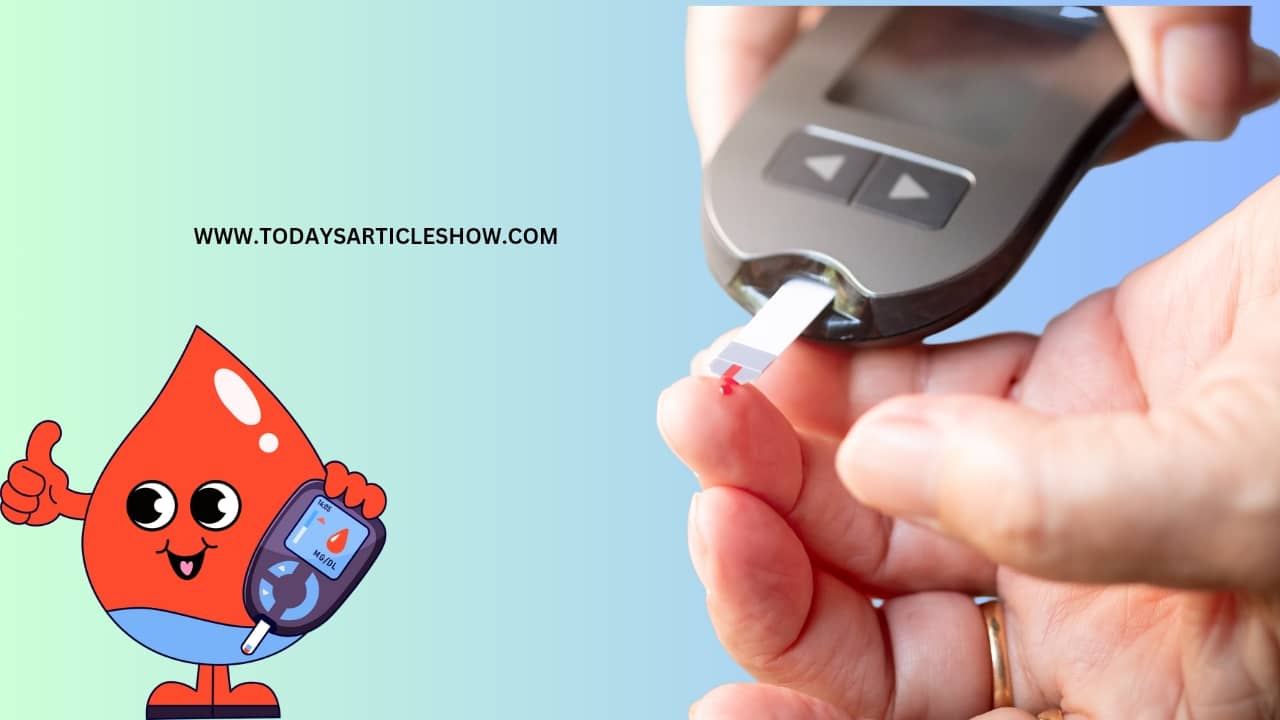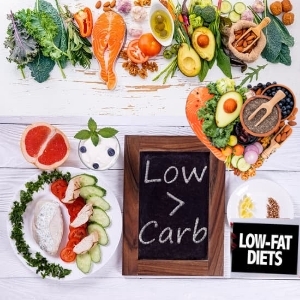Learn How does Diabetes Affects the Body, including Causes and Symptoms. Gain insights into the impact of Diabetes on overall health.
Haven’t heard that name, “Diabetes”?
That’s probably because Diabetes is hardly mentioned in the everyday vocabulary of American middle-class society. Diabetes is quite commonly referred to in the medical community as “primary” or “true,” while secondary or “predisposition” diabetes is considered a “misdiagnosis.” Which sounds a bit like an overly biassed newspaper article compared to the facts, doesn’t it?
Diabetes impact in our body
Diabetes is one of the major diseases on the front lines of healthcare in the US, including the winter, spring, and fall seasons.

The numbers are staggering. Diabetes is the leading cause of death in the US. It accounts for 29 percent of deaths, according to the CDC.
Diabetes is currently a major public health issue in the United States, affecting 1.8 million people. A very large group of diabetes patients die from diabetic complications, including cardiovascular diseases, strokes, and kidney failure. This was reported by the CDC.
Diabetic Nephropathy:
Diabetes causes abnormal kidney function, which leads to a decline in kidney function and eventually death. Diabetes causes progressive kidney damage through various changes that affect the kidney’s ability to filter blood and control blood sugar levels. An estimated 20 million Americans have diabetes. In 2000, diabetes resulted in 90,000 deaths in the US.
Hypoglycemia (Low Blood Sugar):
About 29 percent of American adults have diabetes. That’s over 36 million Americans with diabetes. A further 32 percent have pre Diabetes.
Being diagnosed with diabetes should be a cautionary tale to put a plan in place to prevent further complications.
However, nearly 5 million Americans have diabetes but lack insulin or glucose monitoring supplies, insulin or glucose testing supplies, and/or diabetes medications. A considerable percentage of diabetic patients complain that they feel embarrassed to be diagnosed with diabetes.
In addition, a large number of people suffer from Diabetic Neuropathy, which is the sensation of limb or tissue damage. Diabetes can seriously impair and damage nerves, resulting in severe, continuous pain.
Diabetes Drug safety issues:
Diabetes drug safety issues have been exposed over the past 20 years, revealing that many medications are being overprescribed and that current methods for treating diabetes aren’t necessarily meeting patient needs. Just this year, the FDA announced that it was re-evaluating diabetes drug safety issues.
The recent findings and controversies are outlined in a recent article by Glenn Peloza, Ph.D. He is the author of multiple articles on diabetes drug safety issues, including diabetic neuropathy. There is a good chance that a potentially fatal side effect of the medication will worry you.
Diabetic neuropathy can be an extremely painful disorder. It can cause numbness and tingling in a patient’s limbs and extremities. Patients may even lose the sensitivity of their skin. This is often called diabetic neuropathy, and it can greatly affect a patient’s quality of life.
For the majority of diabetics, it’s just a minor inconvenience that’s inconvenient to them. But for a very small percentage of diabetics who suffer from diabetic neuropathy, it’s life-threatening.

Chronic kidney disease:
More than 45 percent of diabetic patients suffer from chronic kidney disease (CKD). The primary reason for this is diabetes, which often reduces a patient’s blood flow. This decrease in blood flow is compensated by extra amounts of fluid in the body.
It’s normal for people with diabetes to lose fluid through the excretion of sweat and urine. However, diabetes can cause a decrease in blood flow, which can reduce fluid flow. That results in edema, a buildup of fluid that impairs kidney function.
Kidneys are supposed to remove excess fluid from the body, but this can become a serious concern in diabetic patients with chronic kidney disease. The condition can lead to life-threatening organ failure, kidney failure, and even death.
Increased Blood Pressure:
About 35 percent of diabetics have High Blood Pressure (Hypertension). Since a lot of diabetic patients have high blood pressure and get regular medication to prevent it, it’s worth being more cautious than normal to ensure that the medications work well and do their intended job.
A number of high blood pressure drugs can cause kidney damage, including the blood pressure medication rosiglitazone(Avandia). Therefore, patients should be cautious when they’re prescribing or taking any diabetes drug that is associated with kidney damage.
Diabetic Neuropathy affects many patients and can be extremely painful and challenging for a patient.
A lot of Diabetic patients think that because they have a relatively mild form of diabetic neuropathy, they can take their medication without being concerned that the medication will damage their kidneys or even give them kidney failure.
But it’s wise to have serious reservations. They should consult with their physician or other experts and ensure that the medication they’re using is specifically prescribed for diabetes. Acting on your symptoms and cautioning your doctor that you’re concerned that a diabetic drug could be harmful to your kidneys is the safest thing you can do for your kidneys.
Diabetes drug safety concerns have been raised in the last 20 years, revealing that a large number of medications are being prescribed and that current diabetes treatment methods are not always meeting patient needs.
Several drugs are known to cause severe, life-threatening complications in diabetic patients, and many drugs are known to have more serious safety issues. There is a good chance that a potentially fatal side effect of the medication will worry you.

What causes Low Blood Sugar without Diabetes-
Low Blood Sugar, also known as Hypoglycemia, is typically associated with diabetes. However, there are a variety of other factors that can cause low blood sugar levels without the presence of diabetes. One potential culprit is excessive alcohol consumption. Alcohol can interfere with the liver’s ability to produce glucose and also impairs the body’s ability to release stored glucose into the bloodstream. Additionally, certain medications such as beta blockers and sulfonylureas can cause low blood sugar levels.
Stress and sleep deprivation have also been linked to hypoglycemia in some individuals. Stress triggers an increase in cortisol production which can interfere with insulin sensitivity and lead to drops in blood sugar levels. Lack of sleep disrupts hormone regulation which can affect glucose metabolism.
It’s important to note that just because someone experiences occasional episodes of low blood sugar doesn’t necessarily mean they have a medical condition or illness causing it.
Monitoring diet, exercise habits, stress levels, and overall health may help identify possible causes for hypoglycemic episodes not related to diabetes.
Diabetes Snacks
One great option is fresh fruit. Not only does it provide natural sweetness, but it’s also full of fiber which can help slow down the absorption of sugar into your bloodstream.
Another option is a handful of nuts or seeds. They’re packed with healthy fats, protein and fiber which make them a filling snack that won’t cause a spike in blood sugar.
If you’re looking for something savory, try raw veggies like carrot sticks or cucumber slices paired with hummus or guacamole for dipping. And if you’re feeling indulgent, try making homemade popcorn with low-fat butter or toppings like Parmesan cheese or chili powder.
Some great options for diabetes-friendly snacks include hard-boiled eggs with cherry tomatoes, sliced veggies with hummus or guacamole, nuts (such as almonds or walnuts), Greek yogurt with berries, and apple slices with peanut butter.
These snacks provide nourishing protein and healthy fats helping control your hunger levels until your next meal.
The bottom line is “Don’t let Diabetes limit your snacking choices”- just make sure to choose whole foods that balance carbohydrates with protein and healthy fats to keep your blood sugar steady while satisfying those snack cravings!
What Food Causes Diabetes
The link between Food and Diabetes has been a topic of much debate in the scientific community. While some studies suggest that certain types of foods, such as sugary drinks and processed meats, may increase the risk of developing diabetes, other studies challenge these findings.
One theory is that it’s not necessarily specific foods that cause diabetes, but rather an overall unhealthy diet and lifestyle. Lack of physical activity and excess sugar intake have both been linked to higher rates of obesity, which in turn increases the likelihood of developing type 2 diabetes.
It’s important to remember that everyone’s body responds differently to different types of foods. The key is finding a balanced diet rich in fruits, vegetables, whole grains, lean proteins, and healthy fats while limiting highly processed or sugary foods.
If you’re concerned about your risk for type 2 diabetes or want guidance on how to make healthy dietary choices tailored specifically to your individual needs and preferences seeking advice from a registered dietitian can be beneficial.
Diabetes Symptoms in Men
Diabetes is a common metabolic disorder that affects millions of people worldwide. While the impact of diabetes on men and women may be similar, there are some specific symptoms that affect men more frequently than women.
Men with diabetes may experience sexual-related complications such as erectile dysfunction or decreased libido. In addition to these symptoms, they may also suffer from frequent urination and increased thirst due to a lack of insulin production in the body.
Unfortunately, many men ignore these warning signs until it’s too late because they tend to neglect their health and avoid going for regular check-ups. This can result in serious complications such as blindness, kidney failure, heart disease, or even amputations.
Therefore, it’s important for men to educate themselves about the early signs of diabetes and take proactive measures to prevent its onset by adopting a healthy lifestyle including regular exercise and a balanced diet. Taking care of your overall health not only decreases your risk of developing diabetes but also improves your quality of life now –and later!
Dog Diabetes Symptoms
If you notice any of these signs in your pup, it’s necessary to bring them to the veterinarian for a proper diagnosis. With proper treatment and management, dogs with diabetes can still live happy and healthy lives.
It’s also important to note that certain breeds are more prone to developing Diabetes than others. These include schnauzers, poodles, dachshunds, beagles and terriers. However, all dogs regardless of breed or age should have regular check-ups with their vet to ensure they’re staying healthy.
By being aware of dog diabetes symptoms and getting prompt medical attention if needed; we can help our canine companions live long and fulfilling lives by our side!
Safety measures for Diabetic patients:
Patients should be proactive in protecting themselves. Instead of taking medications at random, the patient should be very cautious with all medications.
A patient with diabetes should ask their physician or other experts, not just their general practitioner, about the risks and benefits of different medications. The patient should also become familiar with the most effective medications, alternative methods for monitoring blood sugar, and precautionary measures.
Consuming enough healthy foods and exercising on a regular basis are two ways to improve medication effectiveness in patients. Patients should be cautious about taking unnecessary medications.
Take them when your doctor tells you to take them and don’t take them at the wrong time.
Eating properly and taking proper precautions, such as a healthy diet, regular exercise, and possibly monitoring your blood sugar closely to adjust your medications when necessary, are important methods for keeping your blood sugar under control and avoiding devastating complications.
Best Natural Supplement for Diabetes
Sponsored
( Highly Recommended Product ) : Clave Diabetes Tipo 2- Diabetes Natural Control
The PROVEN Natural way to tame your Blood Sugar levels and might even REVERSE your Type 2 Diabetes. 12,000 people have benefited from this breakthrough on Diabetes.
CLICK HERE to Learn more about Clave Diabetes Tipo 2 natural Diabetes control supplement.








